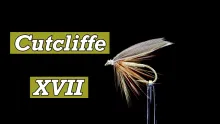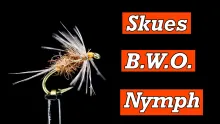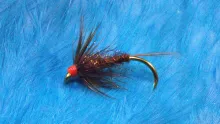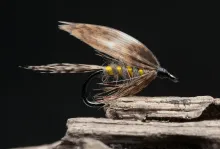I love Cutcliffe and his 1863 book "The Art of Trout Fishing on Rapid Streams". I also love Tenkara. One of the things I learned to appreciate is the versatility of Futsu Kebari or flies tied with rooster hackle but largely fished wet.
As I learned more about historic fly patterns in both the US and England, I saw references to old fly patterns tied with rooster hackle. On the continent (Spain and France) you see more of them...but the English literature seemed to have largely saved rooster hackled flies for Dry flies.
Then I discovered "West Country" flies which were all rooster hackled wet flies. The "culmination" or the most recent written work published from this tradition is Cutcliffe's book. It seems, the dry fly movement made a "forever" impression and change on the West Country landscape and the traditions had not been "re-discovered" like that of the North Country.
For me, on rough tumbling freestone American streams like that in the mountains of NYS where I fish these flies can be extremely effective.
While Cutcliffe, in keeping with English fly fishing tradition, did list specific patterns associated with months of the year...but most importantly he gave a set of "principles" or "formula" for making a fly. He was not interest in exact copy flies...more "suggestive" patterns or "attractors" of food.
The fomula is simple...
- start with a great hackle. Pick a spade or triangular shaped hackle with great vibrant color.
- create a dubbing mix that matches that color.
- use a hook whose shank length is at or slightly smaller than the length of the hackle fibers.
- double your hackle
- tie the hackle in by the tip at the bend end of the "thorax"
- continue dubbing up.
- when wrapping the hackle...start to spiral or "palmer" until you reach the point for the collar and then make touching wraps.
- using thumb and index finger "pinch" the wrapped hackle so as to split so it is only on the top and bottom making legs and a wing.
- using a pen knife or similar tool "curl" the hackle fibers like a ribbon.
- pick out the dubbing so it blends in with the hackle fibers.
Please give this and some of the variations a try...you will be pleasantly surprised!
- Log in to post comments








Mojandomoscas.com.ar
I love this type of flies, specifically this pattern I did not know, so it will surely be part of my fishing box next season. Thank you very much for sharing. A hug from Patagonia Argentina
Me encantan este tipo de moscas, específicamente este patrón no lo conocía, así que seguramente será parte de mí caja de pesca en la próxima temporada. Muchas gracias por compartir. Un abrazo desde la Patagonia Argentina